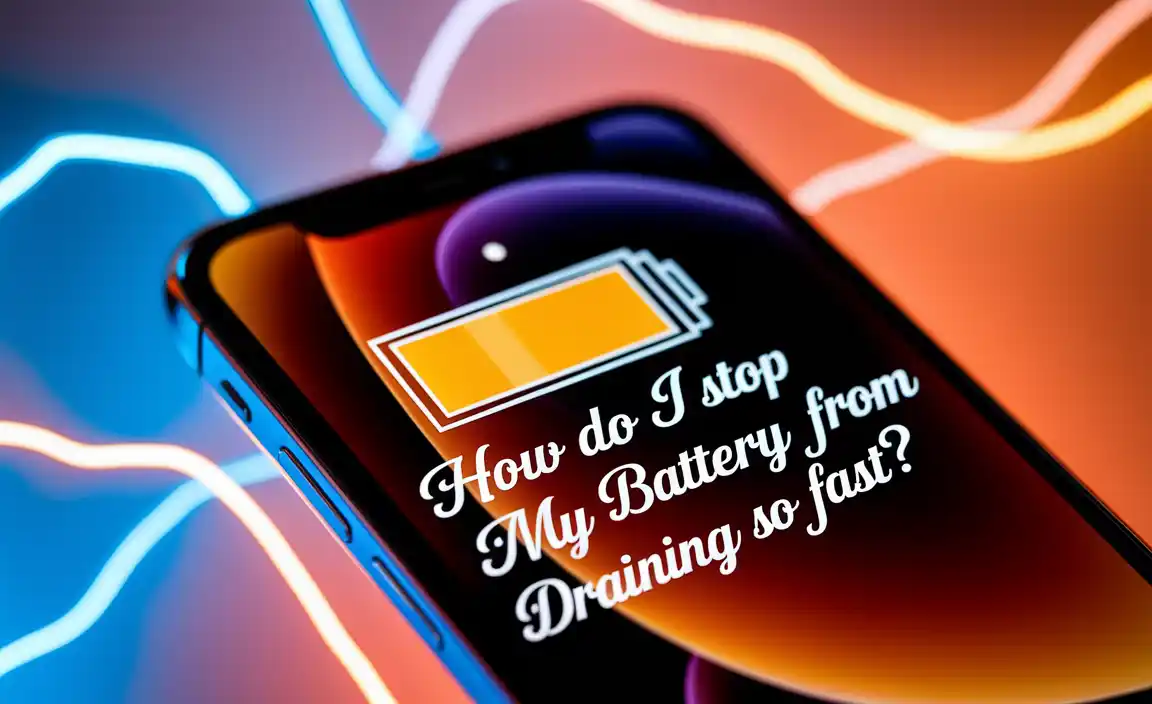Your Blink camera battery is key to keeping your home secure. Simple, regular checks and the right replacement ensure continuous monitoring. This guide makes managing your Blink camera’s power easy and reliable.
Keeping an eye on your home is a top priority, and your Blink cameras are a big part of that. But what happens when the battery runs low? A dead battery means a blind spot, and that’s never good for security. Don’t worry, though! Powering your Blink cameras is simpler than you might think. We’ll walk through everything you need to know, from understanding your current battery to picking the perfect replacement and keeping your system running smoothly. Let’s make sure your home is always protected.
Here’s what we’ll cover to keep those Blink cameras powered up:
Understanding your Blink camera’s power needs.
Choosing the right Blink camera batteries and chargers.
Simple steps for replacing your Blink camera battery.
Tips for extending battery life.
Troubleshooting common battery issues.
Understanding Your Blink Camera’s Power
Most Blink cameras come equipped with AA lithium batteries. These are fantastic because they last a long time, often up to two years in typical use. This means you don’t have to climb ladders every few months to swap them out. However, “typical use” is the key phrase. If your camera is in a high-traffic area, experiences frequent motion detection events, or is in extreme weather conditions, those batteries might drain faster.
Each Blink camera model can have slightly different battery requirements. For instance, some newer models might use a rechargeable battery pack instead of disposable AA batteries. It’s always best to check your specific camera model’s manual or the Blink app to know exactly what kind of power it needs.
The Blink app is your best friend here. It will show you the battery level for each camera. When a battery gets low, you’ll usually receive a notification. This heads-up is crucial for proactive replacement, so you don’t miss a single moment of surveillance.
Choosing the Right Blink Camera Batteries
When it comes time to replace your Blink camera batteries, using the correct type is vital for performance and longevity.
Types of Blink Camera Batteries
AA Lithium Batteries: These are the most common type for many Blink cameras, including the Blink Outdoor and Blink XT series. They’re known for their long shelf life and ability to operate in a wide range of temperatures. Look for batteries specifically labeled as “Lithium” or “Lithium Metal.” Common brands include Duracell, Energizer, and Panasonic.
Why Lithium? Unlike alkaline batteries, lithium AA batteries provide a more stable voltage output, which is better for the electronics in your camera. They also perform better in colder temperatures, which is a big plus for outdoor cameras.
Important Note: Never use rechargeable AA batteries (like NiMH) in cameras designed for disposable lithium AA batteries. They might not provide the correct voltage, leading to performance issues or even damage.
Blink Sync Module 2 Battery: The Sync Module 2 itself often uses AA alkaline batteries (2x AA) for backup power in case of an outage. While it usually runs on AC power, these batteries offer a crucial safety net.
Rechargeable Battery Packs: Some newer Blink cameras, like the Blink Video Doorbell, come with a rechargeable battery pack. These are convenient because you can simply recharge them via USB instead of constantly buying new batteries. When you buy a new Blink camera, check what type of power it uses.
Where to Buy Blink Camera Batteries
You can find the right batteries at most major retailers:
Online Retailers: Amazon, Best Buy, Walmart, etc. These often have the best selection and prices, especially for bulk packs.
Local Big Box Stores: Walmart, Target.
Electronics Stores: Best Buy.
Drugstores and Grocery Stores: While they might have them, selection and price might not be as competitive for lithium batteries.
When buying, always check the product description to ensure they are compatible with your Blink camera model. Look for reputable brands to ensure quality and safety.
How to Safely Replace Your Blink Camera Battery
Replacing the battery in your Blink camera is usually a straightforward process. Safety and proper handling are key to ensuring everything works correctly and your camera isn’t damaged.
Tools You Might Need
Your New Batteries: The correct type for your Blink camera.
A Small Phillips Head Screwdriver: Some Blink cameras have a small screw holding the battery compartment cover in place.
A Sturdy Ladder or Step Stool (if applicable): For cameras mounted high up. Always ensure it’s stable and you have a secure footing.
A Dry Cloth: To wipe down the battery compartment if it looks dusty.
Step-by-Step Battery Replacement Guide
Let’s walk through replacing the AA lithium batteries, which are the most common type. The process for rechargeable battery packs will be slightly different, usually involving detaching the pack and plugging it into a USB charging cable.
1. Access the Blink App: Open your Blink app on your smartphone or tablet.
Navigate to the settings for the camera you need to service.
Look for the battery level indicator. This confirms which camera needs attention and helps you verify the change later.
2. Prepare Your Workspace: If your camera is mounted outside, ensure your ladder or step stool is securely positioned. If the camera is indoors, find a well-lit area. It’s a good idea to place a small towel or mat down to prevent dropping small parts.
3. Open the Battery Compartment:
Twist and Slide: Many Blink cameras have a battery compartment that you can access by gently twisting the lower section of the camera or sliding it open. Refer to your camera’s specific manual if you’re unsure.
Remove Screw (if applicable): Some models may have a small Phillips head screw securing the battery cover. Carefully remove this screw and set it aside in a safe place (like a small dish or tray so it doesn’t get lost). Then, gently pry or slide the cover off.
4. Remove Old Batteries:
Note the orientation of the batteries (positive and negative ends). Most battery compartments have markings indicating ” + ” and ” – “.
Gently pull out the old batteries. You might need to use a fingernail or a non-metal tool very carefully to loosen a stuck battery. Avoid using metal objects that could short the battery or damage the compartment.
5. Clean the Battery Compartment (Optional but Recommended):
If you see any dust or corrosion, gently wipe the inside of the compartment with a dry cloth. Ensure it’s completely dry before inserting new batteries.
6. Insert New Batteries:
Carefully insert the new AA lithium batteries, making sure to match the positive (+) and negative (-) ends with the markings in the compartment. They should slide in easily. If you have to force them, double-check you have them oriented correctly.
7. Close the Battery Compartment:
Reattach the battery cover. If there was a screw, line it up and carefully screw it back in. Do not overtighten.
If it’s a twist-off or slide-on cover, ensure it’s securely in place.
8. Verify in the App:
Open your Blink app again.
The battery indicator for that camera should now show a full charge. If it doesn’t update immediately, try refreshing the app or restarting your phone. The camera might take a few minutes to a few hours to fully communicate its new battery status.
This straightforward process ensures your Blink camera stays powered and ready to protect your home.
Getting the Most from Your Blink Camera Batteries
Maximizing battery life means fewer battery changes and more peace of mind. Here are some simple yet effective tips:
Optimize Motion Settings:
Motion Frequency: Reduce how often your camera records motion. Setting it to “Once” or “Every Minute” instead of “Frequently” can significantly extend battery life.
Motion Sensitivity: Lowering the sensitivity means the camera records fewer events, especially if you have pets or trees blowing in the wind.
Activity Zones: Configure activity zones to focus detection on specific areas and ignore others, like a busy sidewalk. This helps prevent unnecessary recordings.
Manage Recording Duration:
Shorter clip lengths mean less power used. Aim for clips that are just long enough to capture the event. A common setting is 5-10 seconds.
Utilize the Battery Indicator:
Pay attention to the battery levels in the Blink app. Replacing batteries when they are low, rather than waiting until they are dead, prevents gaps in your security coverage.
Wi-Fi Signal Strength:
Your camera uses energy to communicate with your Wi-Fi network. A strong, stable Wi-Fi signal means the camera doesn’t have to work as hard, potentially saving battery. If you have weak signal areas, consider a Wi-Fi extender or mesh network.
Number of Clips:
The more clips your camera records, the faster the battery drains. Review your camera’s recording habits and adjust settings if you notice excessive recording.
Temperature Extremes:
While lithium batteries are good in cold, extreme heat or cold can still impact performance. If possible, position cameras where they are somewhat shielded from direct, intense sun or prolonged freezing temperatures.
Firmware Updates:
Ensure your Blink cameras and Sync Module are running the latest firmware. Sometimes, updates include power management improvements. These usually happen automatically when connected to the Sync Module.
By implementing these tips, you can help ensure your Blink camera batteries last as long as possible.
Troubleshooting Common Blink Camera Battery Issues
Sometimes, you might run into problems with your Blink camera’s battery. Here’s how to tackle some common issues:
Issue: Battery indicator not showing full or updating
Solution 1: Check Battery Orientation: Ensure the new batteries are inserted correctly, with the positive (+) and negative (-) ends aligned with the markings in the compartment.
Solution 2: Clean Battery Contacts: Sometimes, residue or corrosion can form on the battery contacts in the compartment or on the batteries themselves. Gently clean them with a dry cloth or an eraser to ensure a good connection.
Solution 3: Try Different Batteries: Very rarely, a new battery might be faulty. Try a different brand-new battery from a different pack.
Solution 4: Restart the Camera: Remove the batteries, wait for about 30 seconds, and reinsert them. This can sometimes refresh the camera’s connection to the app.
Solution 5: Refresh the App: Close your Blink app completely and reopen it. Sometimes a simple app refresh can pull the updated battery status.
Issue: Battery drains much faster than expected
Solution 1: Review Motion Settings: Go into your Blink app and check your motion sensitivity, motion frequency, and activity zone settings. High sensitivity and frequent recording will drain batteries quickly.
Solution 2: Reduce Clip Length: A shorter video clip recording uses less power. Adjust your clip length to the minimum necessary.
Solution 3: Check Wi-Fi Signal: A weak Wi-Fi signal forces the camera to exert more power to maintain a connection. If the signal is poor, consider moving your router, using a Wi-Fi extender, or placing your camera closer to the router.
Solution 4: Number of Events: If your camera is in a busy area, it will record more often. Consider if the camera is placed optimally or if fewer motion triggers are needed.
Solution 5: Environmental Factors: Extreme temperatures (both hot and cold) can affect battery performance. While lithium batteries are robust, prolonged exposure to extremes can reduce their lifespan.
Issue: Camera offline or not responding, but battery was recently replaced
Solution 1: Check Battery Compartment Seal: Ensure the battery compartment cover is properly sealed and secured.
Solution 2: Wi-Fi Connection: Verify your home Wi-Fi network is operational. Power cycle your router and modem.
Solution 3: Sync Module Status: If you’re using a Sync Module, check its status lights. A blinking blue or red light often indicates a connection issue. You might need to re-sync the camera to the Sync Module.
Solution 4: Camera Reset: If issues persist, you might need to perform a camera reset. Refer to Blink’s support documentation for your specific model.
Remember, for any issues not resolved by these basic troubleshooting steps, contacting Blink customer support is always a good next step. They can offer specific advice for your camera model and situation.
Blink Camera Power Options Comparison
Understanding the different power sources and their implications can help you make informed decisions about your Blink security system.
| Power Source Category | Example | Pros | Cons | Best For |
| :——————– | :—— | :— | :— | :——- |
| Disposable Batteries | AA Lithium (e.g., Energizer Ultimate Lithium) | Long lifespan (up to 2 years); reliable in various temperatures; readily available. | Requires replacement; ongoing cost; environmental impact of disposal. | Outdoor cameras, areas where frequent access is difficult. |
| Rechargeable Battery Packs | Blink XT2/Outdoor Camera Proprietary Pack; Blink Video Doorbell Pack | Reusable; cost-effective over time; environmentally friendly (less waste). | Requires regular recharging; can’t be used while charging; initial pack cost. | Indoor cameras, doorbells, areas with easy access for charging. |
| AC Power | Blink Outdoor Power Adapter; Blink Wired Floodlight Camera | Continuous power; no battery management needed; uninterrupted recording for some models. | Requires a power outlet nearby; may need drilling or professional installation for outdoor use; vulnerable to power outages without a backup. | Areas with available power sources; high-traffic indoor areas. |
| Battery Backup (for Sync Module) | AA Alkaline Batteries (in Sync Module 2) | Provides power to cameras connected via the Sync Module during a power outage. | Needs periodic replacement in the Sync Module. | Ensuring uninterrupted connectivity through power interruptions. |
Choosing the right power solution depends on your camera’s location, your access to power, and your preference for maintenance. For most Blink outdoor cameras, the long-lasting AA lithium batteries offer a great balance of convenience and reliability.
External Resources for Battery Care
For those who want to dive deeper into battery technology and best practices, here are some authoritative resources:
The U.S. Department of Energy: Offers comprehensive information on battery types, recycling, and energy efficiency. Their Battery Recycling resources provide valuable insights into responsible disposal.
National Renewable Energy Laboratory (NREL): NREL is at the forefront of energy research. Their publications on battery technologies can offer advanced understanding for those interested. You can explore their Battery Technologies section for more.
* Consumer Reports: Known for unbiased testing and reviews, Consumer Reports often provides safety guides and performance comparisons for various battery-powered devices and batteries themselves. While specific articles may require a subscription, their general advice on electronics and power is reliable.
Frequently Asked Questions (FAQ)
Q1: How often should I replace my Blink camera batteries?
A1: For Blink cameras using AA lithium batteries, they can last up to two years under normal usage. The Blink app will notify you when the battery level is low, so you can replace them proactively before they die.
Q2: Can I use rechargeable batteries in my Blink camera?
A2: Generally, no. Most Blink cameras are designed for non-rechargeable AA lithium batteries. Using rechargeable batteries (like NiMH) might not provide the correct voltage and can lead to performance issues or damage. However, some specific Blink models, like the Video Doorbell, come with their own rechargeable battery packs.
Q3: What does it mean if my Blink camera battery drains very quickly?
A3: Fast battery drain can be caused by several factors: high motion sensitivity settings, frequent motion detection events, short clip lengths, poor Wi-Fi signal strength, or extreme operating temperatures. Adjusting these settings in the Blink app can help extend battery life.
Q4: Where is the best place to buy Blink camera batteries?
A4: You can buy compatible AA lithium batteries from major online retailers like Amazon, or in person at stores like Walmart, Target, or electronics shops. Always ensure you are purchasing the correct type of battery specified for your Blink camera model.
Q5: Do Blink cameras work without batteries?
A5: Most Blink cameras rely on batteries for operation. Some models, like the Blink Video Doorbell, also have options for hardwiring to a doorbell chime system for continuous power. The Sync Module 2 uses AC power but has battery backup.
Q6: My Blink camera is showing a low battery, but I just replaced it. What should I do?
A6: First, double-check that the new batteries are inserted correctly, matching the positive (+) and negative (-) ends. Also, ensure the battery compartment is clean and the cover is securely closed. Sometimes, refreshing the Blink app or removing and reinserting the batteries can resolve this.
Q7: Can I leave my Blink camera plugged in all the time if it has an AC adapter option?
A7: If your specific Blink camera model supports AC power (like some Blink Outdoor models with and adapter, or the Blink Wired Floodlight Camera), this is a great way to ensure continuous power without battery worries. Always follow the manufacturer





